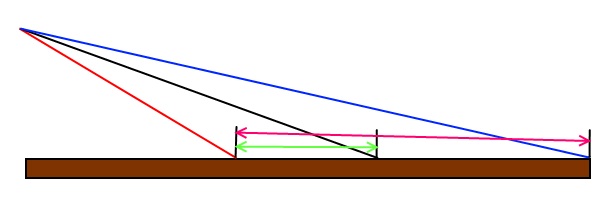
The failure of engine on twin model is one of the main factors that stop somebody to build or to buy twin model. It isn’t fatal stopping one engine on twin. It is more chances to save twin model then single model.
Feature of twin is possibility stall of fin and/or one dead panel of wing when one engine stopped.
It is impossible to make scenario action to save model if you don’t understand it. All your actions have to prevent stall of fin and dead wing panel. If you don’t take it into account the model will drop died wing panel and fall down.
The main enemy is not a wind, rain and e.t.c. It will be panic, and followed random movements of control sticks. Keep composure. You have to be composure.
The most simple and logic decision is move throttle stick back and keep engine on idle or shut down remaining engine and make usual dead stick landing. It’s work. If you have enough height you will make safety landing or minimize damages of model almost any situations.
What do you do when you have recognized you don’t rich the runway?
If you shut down remained engine you would able to minimize damage of model but if you did not shut down running engine you would a good chance to save your model.
Above described technology based that pilot has skill enough for landing in normal mode and dead stick as well.
You must minimize difference lift between both wing panels and keep rudder control on all stages of flying.
Let’s look the picture. Its distance the model fly after stopping one engine without using remained engine or using remained one.

The red one is point distance the model will take using all mechanization of wing including landing gear if the remained engine shut down.
The black one is point distance the model will take in the same case but almost without using mechanization.
The blue one is point distance the model will take using thrust lining engine. In some case only fuel in tank may be limit of it.
If you shut down living engine you should plan your landing pattern to rich runway in limit green line. If you are using thrust living engine the range will be increased till lilac line.
What do you have to do? I think you know – it is enough to increase RPM. But if you move throttle stick ahead only the model will bank and drop to ground in short time. It is very important to watch the model behavior. Additionally you can accelerate model in descent. The light turn the model to the side should be corrected with rudder only. Don’t use ailerons. Remember – ailerons our main enemy. It points you to stall on dead wing panel. It is additional resistant flowing air on wing panel. This resistance may eat last drop of lift on dead wing panel. As you fill that rudder can’t hold model and/or speed starts to decrease. You should move throttle stick back or increase descent of the model or better both together. Control model with throttle, rudder and elevator. If you do not follow such rule the next movement of model will drop dead wing panel and fall down.
Why decrease the RPM help in this situation? The model will turn more and more due to fin is closer to stall. More and more side area of fuselage will produce additional resistance. As you reduce RPM the model will fly straight ahead and braking disappears.
What happens if you do not do it? As fin will be in stall (it cannot hold the model on course) the model makes a sharp turn. The big side area of fuselage will be pointed ahead. It will be strong brake stopping model. Sharp stop, rotation and fall down.
If you do everything right the descent will be a little you will cover longer distance, model will have less descent or will not have descent. It means that you have more chances to save model and rich runway.
Let’s formulate the first rule.You can use living engine for fly only when you have speed and such speed enough to hold model with rudder on straight path. If you obtain reducing of speed and/or weak rudder the RPM should be reduced up to idle.
It works in horizontal area and doesn’t (almost) affect to lift of wind unlike ailerons. Rudder has two features during single engine flight:
You should avoid turning to the dead side under no circumstance when you use living engine.
The lift of wing panels is reduced then you are using aileron. It is additional brake on both sides. But you know what you have to keep each gram of lift on dead side. You know what stall happens sharp. You are flying in one moment you are dropping.
Here are the third rule.You should avoid using ailerons during single engine fly.
The end of part I.